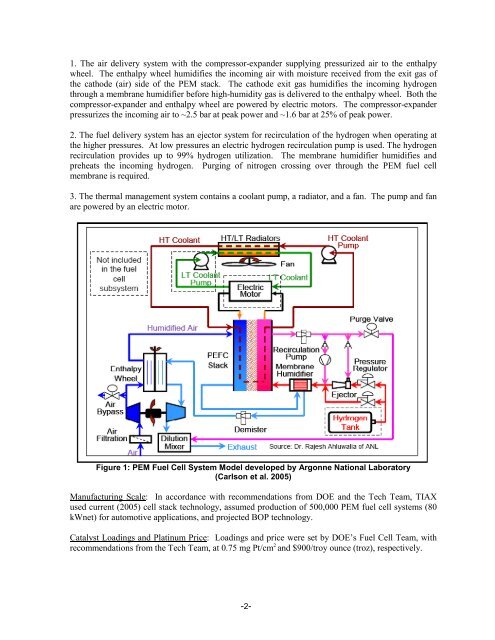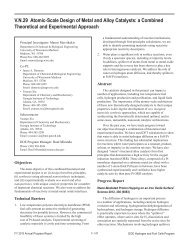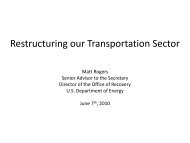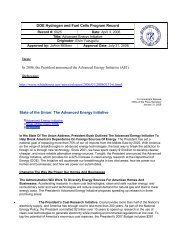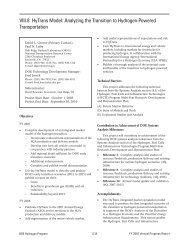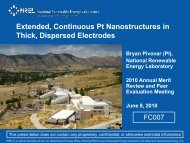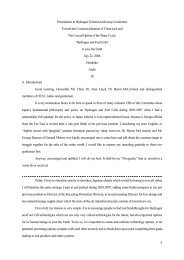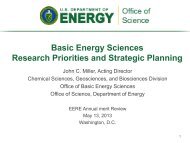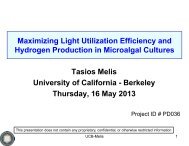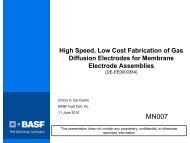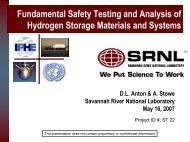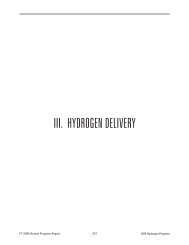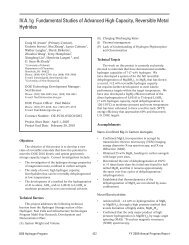Fuel Cell System for Transportation -- 2005 Cost Estimate
Fuel Cell System for Transportation -- 2005 Cost Estimate
Fuel Cell System for Transportation -- 2005 Cost Estimate
Create successful ePaper yourself
Turn your PDF publications into a flip-book with our unique Google optimized e-Paper software.
1. The air delivery system with the compressor-expander supplying pressurized air to the enthalpy<br />
wheel. The enthalpy wheel humidifies the incoming air with moisture received from the exit gas of<br />
the cathode (air) side of the PEM stack. The cathode exit gas humidifies the incoming hydrogen<br />
through a membrane humidifier be<strong>for</strong>e high-humidity gas is delivered to the enthalpy wheel. Both the<br />
compressor-expander and enthalpy wheel are powered by electric motors. The compressor-expander<br />
pressurizes the incoming air to ~2.5 bar at peak power and ~1.6 bar at 25% of peak power.<br />
2. The fuel delivery system has an ejector system <strong>for</strong> recirculation of the hydrogen when operating at<br />
the higher pressures. At low pressures an electric hydrogen recirculation pump is used. The hydrogen<br />
recirculation provides up to 99% hydrogen utilization. The membrane humidifier humidifies and<br />
preheats the incoming hydrogen. Purging of nitrogen crossing over through the PEM fuel cell<br />
membrane is required.<br />
3. The thermal management system contains a coolant pump, a radiator, and a fan. The pump and fan<br />
are powered by an electric motor.<br />
Figure 1: PEM <strong>Fuel</strong> <strong>Cell</strong> <strong>System</strong> Model developed by Argonne National Laboratory<br />
(Carlson et al. <strong>2005</strong>)<br />
Manufacturing Scale: In accordance with recommendations from DOE and the Tech Team, TIAX<br />
used current (<strong>2005</strong>) cell stack technology, assumed production of 500,000 PEM fuel cell systems (80<br />
kWnet) <strong>for</strong> automotive applications, and projected BOP technology.<br />
Catalyst Loadings and Platinum Price: Loadings and price were set by DOE’s <strong>Fuel</strong> <strong>Cell</strong> Team, with<br />
recommendations from the Tech Team, at 0.75 mg Pt/cm 2 and $900/troy ounce (troz), respectively.<br />
-2-


